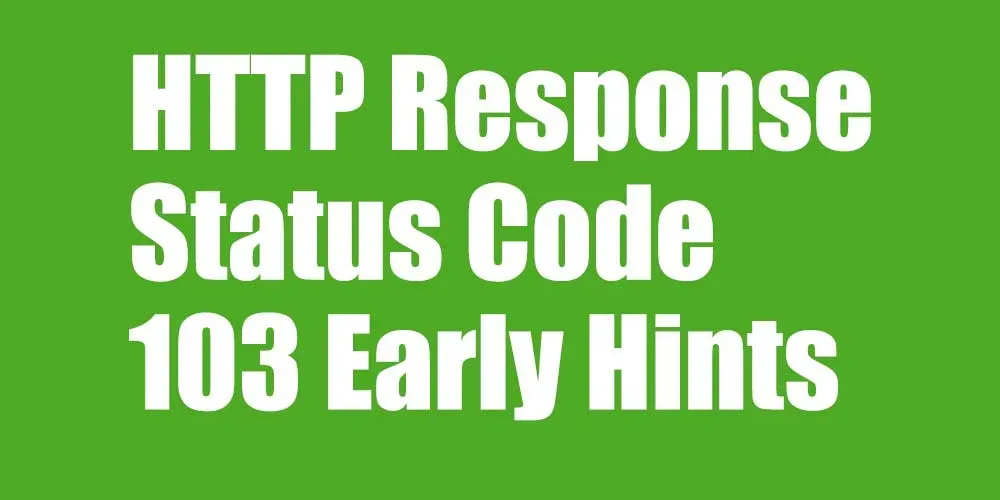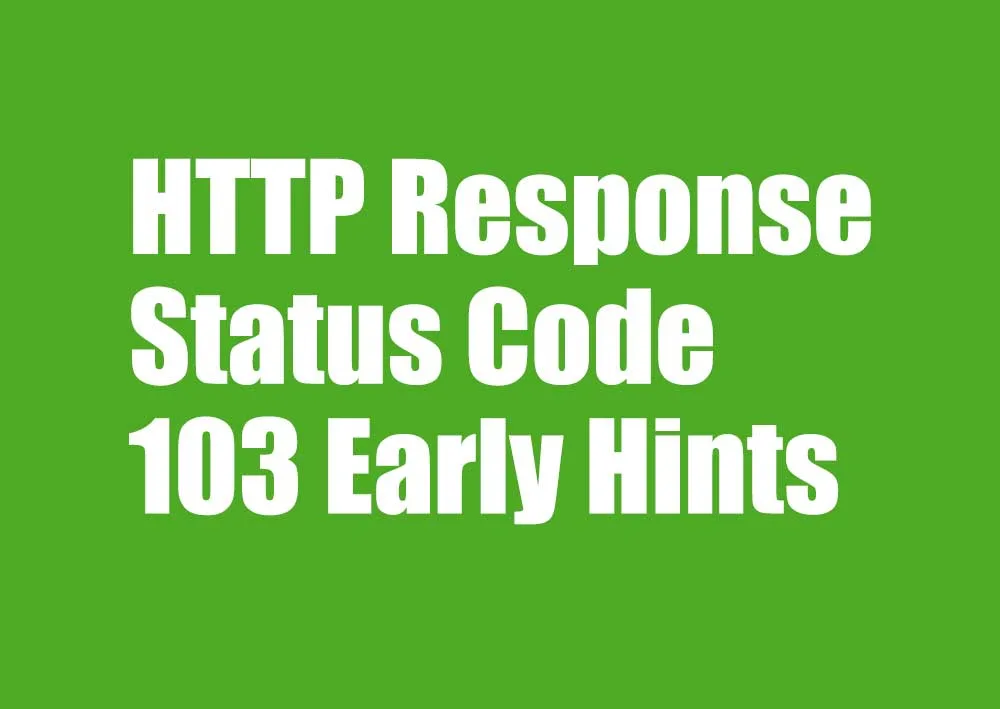Introduction to http code 103 Early Hints
HTTP response status codes are an essential part of the communication between servers and clients. They allow both parties to understand the outcome of a request and to take further action if necessary. One of the newer status codes is the HTTP response status code 103 Early Hints. This status code was introduced in RFC 8297 in 2018. In this article, we will explore what HTTP response status code 103 Early Hints is, when it should be used, and what the benefits are. 103 Early Hints is normally used in conjunction with the Link headers, and it provides the client an opportunity to adjust as required.
What is HTTP Response Status Code 103 Early Hints?
HTTP response status code 103 Early Hints is a provisional response from a server to a client that indicates that the server is about to send a final response. The server can use this status code to send some HTTP headers to the client before sending the final response. These headers can provide information about the final response, such as content type or cache control directives. The client can then use this information to prepare for the final response.
When Should HTTP Response Status Code 103 Early Hints be Used?
HTTP response status code 103 Early Hints should be used when a server needs to send some information to a client before sending the final response. This information can help the client prepare for the final response and improve performance. Some use cases for HTTP response status code 103 Early Hints include:
- Server push: If a server knows that a client will need a specific resource, it can use HTTP response status code 103 Early Hints to push the resource to the client before the client requests it. This can reduce latency and improve performance.
- Large files: If a server is sending a large file, it can use HTTP response status code 103 Early Hints to send information about the file to the client before sending the file itself. This can help the client allocate resources and improve performance.
Benefits of HTTP Response Status Code 103 Early Hints
HTTP response status code 103 Early Hints provides several benefits, including:
- Improved performance: By sending some information to the client before sending the final response, the client can prepare for the final response and reduce latency.
- Reduced round trips: HTTP response status code 103 Early Hints can help reduce the number of round trips between the client and server, which can further improve performance.
- Better resource allocation: By sending information about a large file or other resource, the client can allocate resources more efficiently.
Example 1 -Server Push for Web Resources
Request:
GET /home.html HTTP/1.1
Host: example.com
In this example, the server uses the HTTP 103 Early Hints status code to push the links to the style sheet and JavaScript file to the client before the final response. The client can then use this information to preload the resources, reducing the page load time.
Response:
HTTP/1.1 103 Early Hints
Link: </style.css>; rel=preload; as=style, </script.js>; rel=preload; as=script
Content-Type: text/html
HTTP/1.1 200 OK
Content-Type: text/html
<!DOCTYPE html>
<html>
<head>
<title>Homepage</title>
<link rel=”stylesheet” href=”/style.css”>
<script src=”/script.js”></script>
</head>
<body>
<!– … –>
</body>
</html>
Example 2 -Server Push for Big File
Request:
GET /file.zip HTTP/1.1
Host: example.com
In this example, the server sends the Content-Length header in the HTTP 103 Early Hints response to indicate the size of the file to the client. The client can then allocate the necessary resources for downloading the file. The server can also use this opportunity to send other useful headers like Content-Disposition, Cache-Control, and Content-Encoding.
Response:
HTTP/1.1 103 Early Hints
Content-Length: 10000000
HTTP/1.1 200 OK
Content-Type: application/zip
<binary file content>
HTTP Status Code 103 Early Hints FAQ
Yes, HTTP response status code 103 Early Hints is supported by web servers and clients!
HTTP response status code 103 Early Hints is unique because it allows a server to send some information to the client before sending the final response.
You can use tools like curl or Chrome DevTools to test if your web server supports HTTP response status code 103 Early Hints.
Conclusion
HTTP response status code 103 Early Hints is a useful status code that can improve performance and resource allocation. Although it is still not widely used, it can be a valuable tool for web developers who want to optimise their applications. By understanding HTTP response status code 103 Early Hints and its use cases, developers can take advantage of this status code to improve their applications and make them even more awesome!
.


